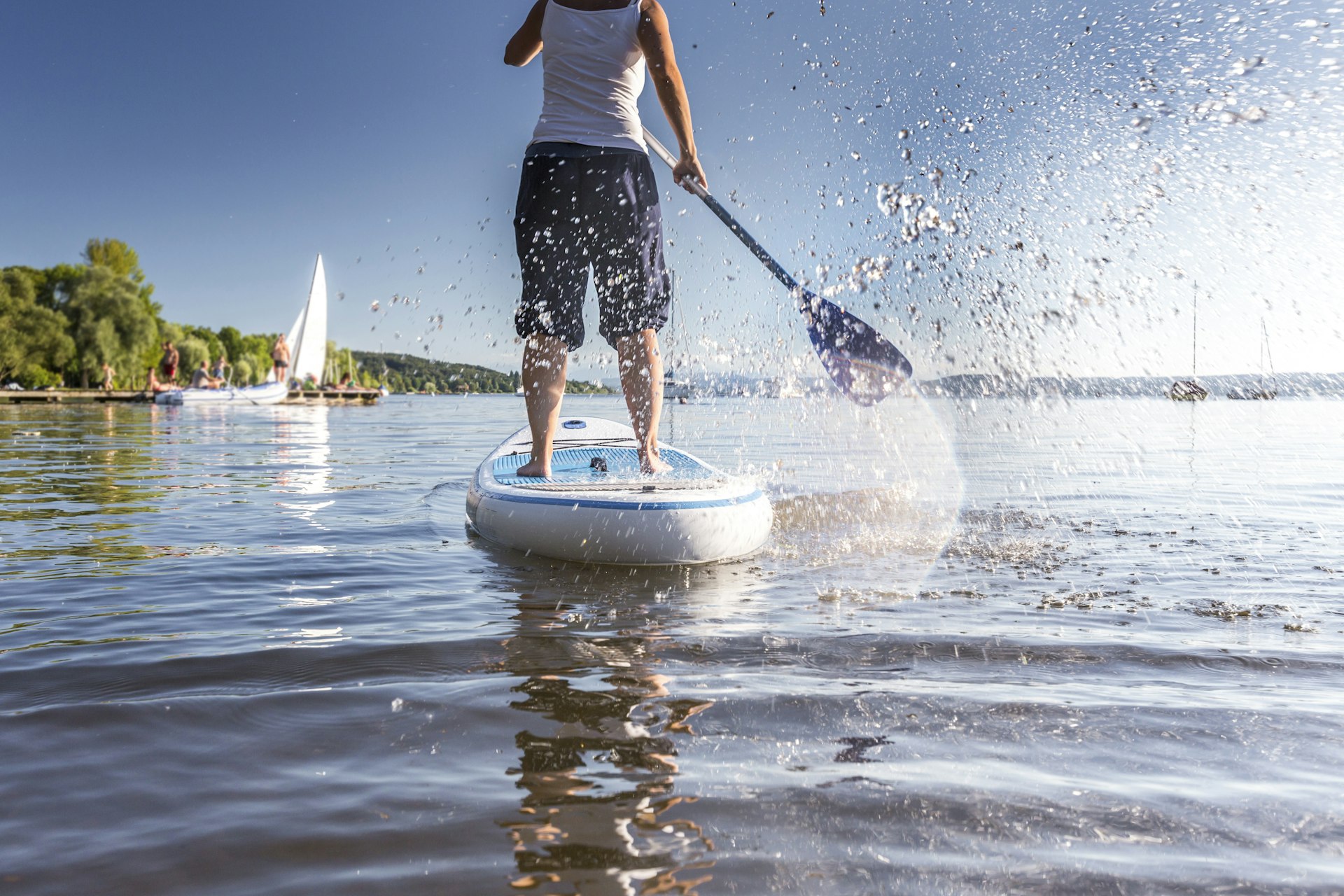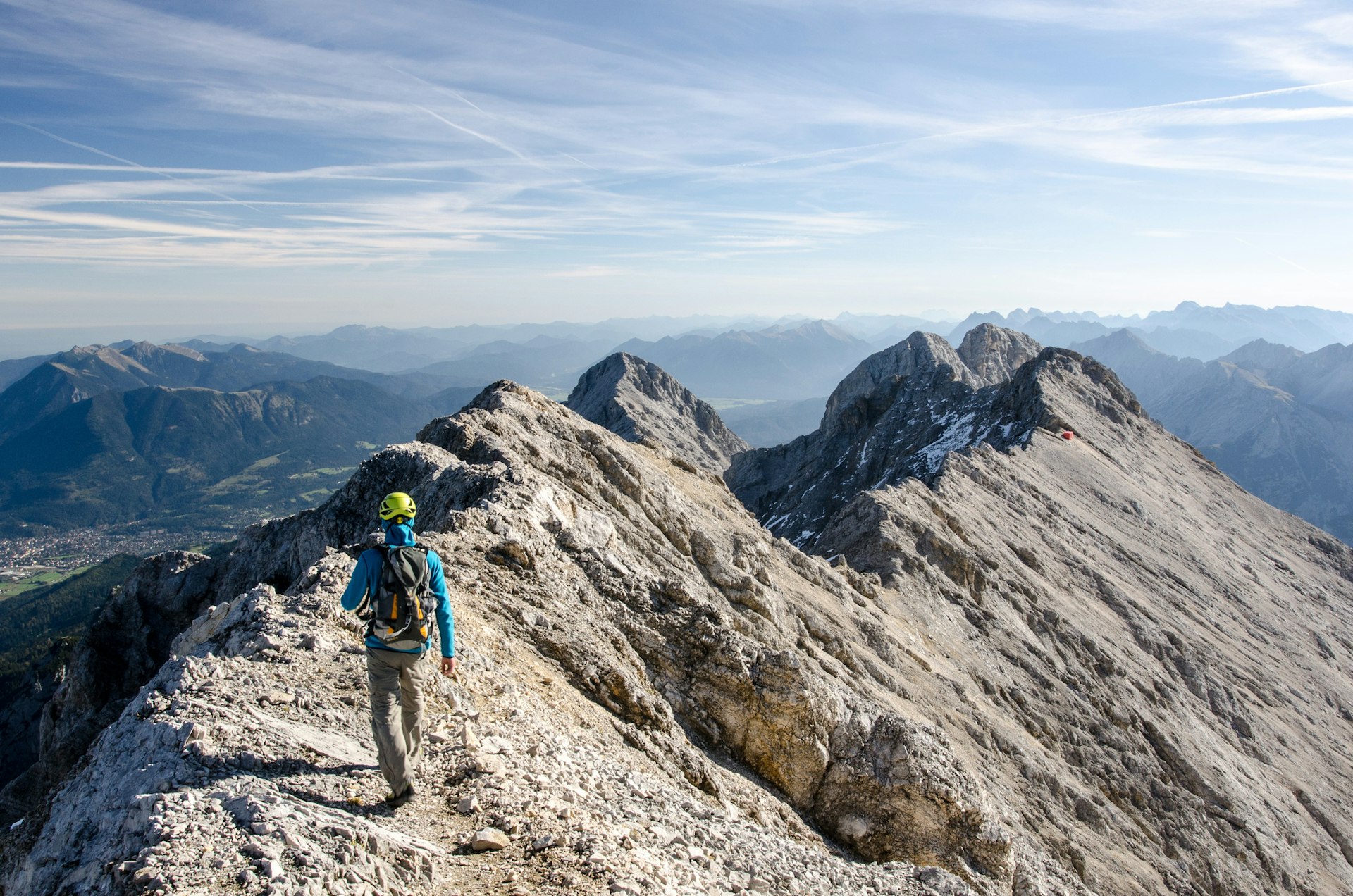If the residents of Munich look pleased with their lot, it’s little wonder – this city strides effortlessly between the urban and outdoors. When you’ve had your fill of palaces, art collections and rollicking beer halls, a little farther afield you’ll find plenty of new cultural thrills and outdoor adventures.
Within an hour or so of the Bavarian capital, you hit the Alps, where hiking trails hoof it up to cloud-shredding peaks and winter snows entice skiers. Alternatively, you could have a historic romp of Augsburg or Ulm, or a fantasy-loaded spin of one of “Mad” King Ludwig’s palaces. Here are seven of the best day trips from Munich.
1. It’s easy to spend more than a day in Berchtesgaden
Travel time: 2 hours
While doable as a day trip at a push, the Alpine dream that is Berchtesgaden is better savored on a long-weekend detour from Munich. This is where Germany slings its hook into Austria. Landscape-wise, it’s astounding, with jewel-colored lakes and rugged limestone mountains, among them Watzmann (2713m/8900ft), Germany’s second-highest peak.
The Königssee, a fjordlike lake of dazzling jade green, cradled by steep mountain walls, is the scenic icing on the proverbial cake. Much of Berchtesgaden’s surrounds are protected by Berchtesgaden National Park, a Unesco biosphere reserve crisscrossed by some of Germany’s most exhilarating hiking trails.
For breathtaking views with minimal effort, head up by bus or car to the eyrie-like Eagle’s Nest, a lodge built as a mountaintop retreat for Hitler on his 50th birthday and now a dark-tourism destination. It took 3000 workers two years to hack out the precipitous 6km-long (3.7-mile-long) road to the top.
How to get to Berchtesgaden from Munich: Berchtesgaden is roughly a two-hour drive southeast of Munich via the A8. The journey takes half an hour longer by train (departures at least hourly).
2. Visit Augsburg, one of Germany’s oldest cities
Travel time: 30 minutes/1 hour (train/car)
If you fancy a breather from Munich but are craving culture as opposed to outdoor adventure, Augsburg hits the mark exquisitely. History is writ large across one of Germany’s oldest cities, founded by the stepchildren of Emperor Augustus (hence the name) some 2000 years ago, and made great and glorious by the medieval textile trade.
A city of spires and pretty gables, Augsburg is real eye candy on the 400km (249 miles) Romantic Road that meanders from the vineyards of Würzburg to the foothills of the Alps. The city’s Old Town revolves around the Rathausplatz, with its fountain honoring the Roman emperor and 17th-century, twin onion dome-spired Rathaus, topped off by a 4m-tall (13ft) pinecone (the city’s emblem).
Factor in a trip to the alley-woven Fuggerei, too, Augsburg’s Catholic welfare settlement, where the rent remains frozen at 1 Rhenish guilder (€0.88) per year. You can also book tickets ahead for the Augsburger Puppenkiste, one of the world’s most fabled puppet theaters bringing fairy tales to life.
How to get to Augsburg from Munich: Augsburg is an hour’s drive northwest of Munich via the A8 motorway. There are very frequent fast trains (ICE, EC) departing from the Hauptbahnhof. The journey takes roughly 30 minutes.
3. See Schloss Neuschwanstein, an inspiration to Walt Disney
Travel time: 1 hour, 45 minutes
Part of the fun is getting your tongue in a twist pronouncing the name of this whimsically turreted 19th-century castle, with its incredibly beautiful backdrop of forest and the Alps. King Ludwig II loved to give free rein to his fertile imagination and nowhere more so than here in Schloss Neuschwanstein. Kids’ bedtime story stuff, the Schloss worked its magic on Walt Disney, who used it as the blueprint for Sleeping Beauty’s castle. It also staged an appearance in the 1968 film Chitty Chitty Bang Bang.
With its interior bearing the hallmark of a stage designer (as opposed to an architect), the castle is more exuberant folly than fortress, with its gaudy grotto, Byzantine-style Thronsaal (Throne Room) and Sängersaal (Minstrels’ Hall) dancing with frescoes from Wagner’s opera Tannhäuser.
While you’re up here, allow time for the 10-minute walk to Marienbrücke, a bridge spectacularly straddling the sheer-sided, waterfall-laced Pöllat Gorge, with knockout views of the castle perched high on its wooded crag.
How to get to Schloss Neuschwanstein from Munich: To reach the castle from Munich in a day, get an early start. The castle is a highly scenic one-and-three-quarter hour drive southwest via the A95. Or take the half-hourly train to Füssen (two hours), from where it is an eight-minute bus ride to the castle.
4. Explore unique sights in the city of Ulm
Travel time: 1 hour, 30 minutes
Under-the-radar Ulm deserves to be better feted, not least because this historic juggernaut of a city has sights you won’t see anywhere else: from the world’s most crooked house (as listed in the Guinness World Records) to the world’s tallest cathedral steeple (161.5m/530ft high), the world’s oldest zoomorphic sculpture (aged 30,000 years), and the birthplace of superstar physicist Albert Einstein.
Top billing naturally goes to the colossal Münster lording it above the Marktplatz, which took almost 500 years to build from the first cathedral stone laid in 1377. From here, dive into the warren of lanes leading to the Fischerviertel, the old fishers’ and tanners’ quarter, where half-timbered houses huddle along the channels of the Blau River.
If you’re on an Einstein mission, you won’t want to miss the rocket-snail fountain depicting the wild-haired genius and the memorial marking the spot where he was born in 1879.
How to get to Ulm from Munich: Ulm is an hour-and-a-half’s drive west of Munich via the A8 motorway. There are twice hourly trains (1¼ hours).

5. Enjoy the natural beauty of Chiemsee, the region’s largest lake
Travel time: 1 hour
Nicknaming Chiemsee the “Bavarian Sea” might be a tad far-fetched, but for beauty, you can’t fault this looking-glass lake, with its heaven-on-earth mountain views. On warm summer days, it’s tempting to just hang out at the lakeside lido beaches, rent a boat or paddle along the shores.
The big cultural deal on the lake is the riotously romantic and unashamedly opulent Schloss Herrenchiemsee, which Ludwig II ambitiously modeled on Versailles back in 1878. The lavishly frescoed, gilded and chandelier-lit Grosse Spiegelgalerie is 10m (33ft) longer than its Versailles counterpart at 98m (321ft) and elicits a chorus of “wows” from visitors.
How to get to Chiemsee from Munich: Prien am Chiemsee – the easiest access point – is an hour’s drive southeast of Munich via the A8. Trains depart frequently for Prien am Chiemsee from Munich’s Hauptbahnhof, making the journey in an hour. To reach the palace, take the ferry from Prien-Stock to Herreninsel (it’s a 20-minute walk through pretty gardens from there).
6. Pay tribute to those killed at Dachau
Travel time: 30 minutes
Needing little introduction, the KZ-Gedenkstätte Dachau was the Nazis’ first concentration camp, built by Heinrich Himmler to house political prisoners in March 1933. The sobering statistics show that it “processed” more than 200,000 inmates and killed at least 43,000. It is now a stark, hard-hitting memorial and poignant reminder of the grim atrocities of the Third Reich.
Allow at least a full morning or afternoon here to fully absorb the exhibits (note that young children may find them too disturbing). Harrowing displays include original photos of the camp, its guards and prisoners, including some depicting the horrific “scientific experiments” carried out by Nazi doctors.
The visitors center is a logical starting point, with its tour-booking desk where you can pick up an audio guide. Two-hour tours depart at 12pm, and tickets should be purchased at least 15 minutes in advance.
How to get to Dachau from Munich: Dachau is a half-hour (30km/19 mile) drive north of Munich via the A99. Follow the signs to KZ-Gedenkstätte Dachau. Alternatively, there are very frequent regional trains (11 minutes) or S-Bahn trains (21 minutes) from Munich Hauptbahnhof. Change for bus 726 (direction Saubachsiedlung) to reach the camp.

7. Head up to the mountains at Garmisch-Partenkirschen
Travel time: 1 hour
Propelling you into the Bavarian Alps proper, this double-barrelled resort snuggles up close to the Austrian border. Garmisch and Partenkirschen are actually two towns (twinned for the 1936 Winter Olympics), the latter being the most appealing of the two, with its pastel-daubed old-world charm.
But, let’s face it, you’re here for the outdoors. Here you’ll find mountainscapes to make your heart sing, whether schussing down ski slopes or hiking high in Alpine meadows. First up should be a ride up to Zugspitze, the so-called “rooftop of Germany” at 2964m (9724ft) above sea level.
At the top, you’ll find snow, a Glacier Adventure Trail and arresting views dipping into four countries (Italy, Austria, Switzerland, and Germany). For more drama, ramble through the 700m-long (2296ft) Partnachklamm gorge, arguably at its most spectacular during the deep freeze of winter.
You’ve come this far, so why not make a couple of days of it? This allows time for visits to Ludwig II’s sumptuous Schloss Linderhof palace and Jagdschloss Schachen hunting lodge, with its Moorish Room straight out of an Arabian Nights fantasy.
How to get to Garmisch-Partenkirschen from Munich: Garmisch-Partenkirschen is a scenic hour’s drive south of Munich on the A95. Or hop on one of the hourly trains from the Hauptbahnhof. The journey takes around an hour and a half. From Garmisch, a cogwheel train chugs to Eibsee, where you can take the cable car to Zugspitze. Start early and avoid weekends to dodge the crowds.
